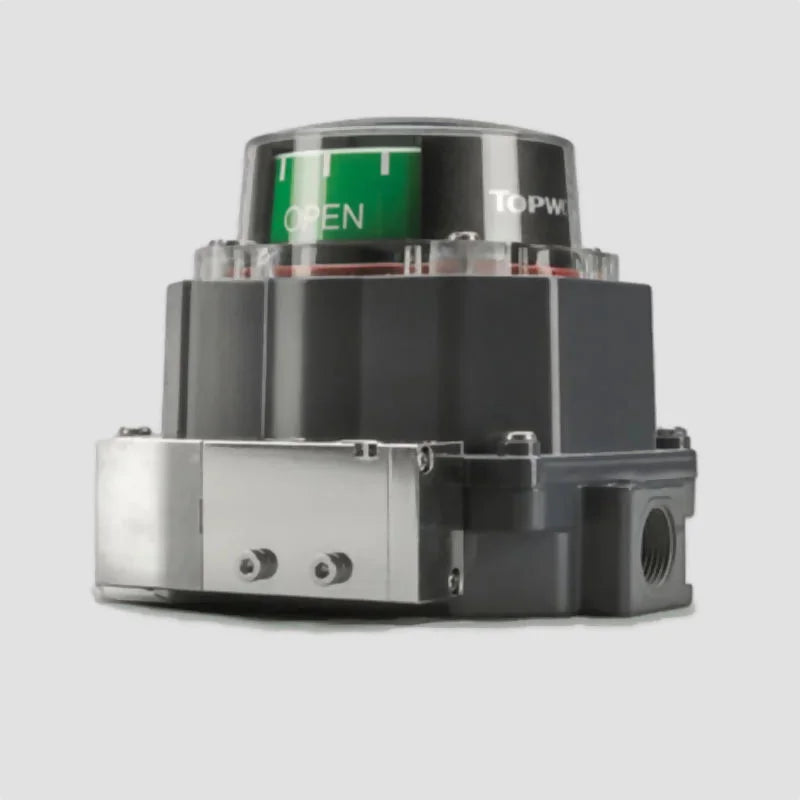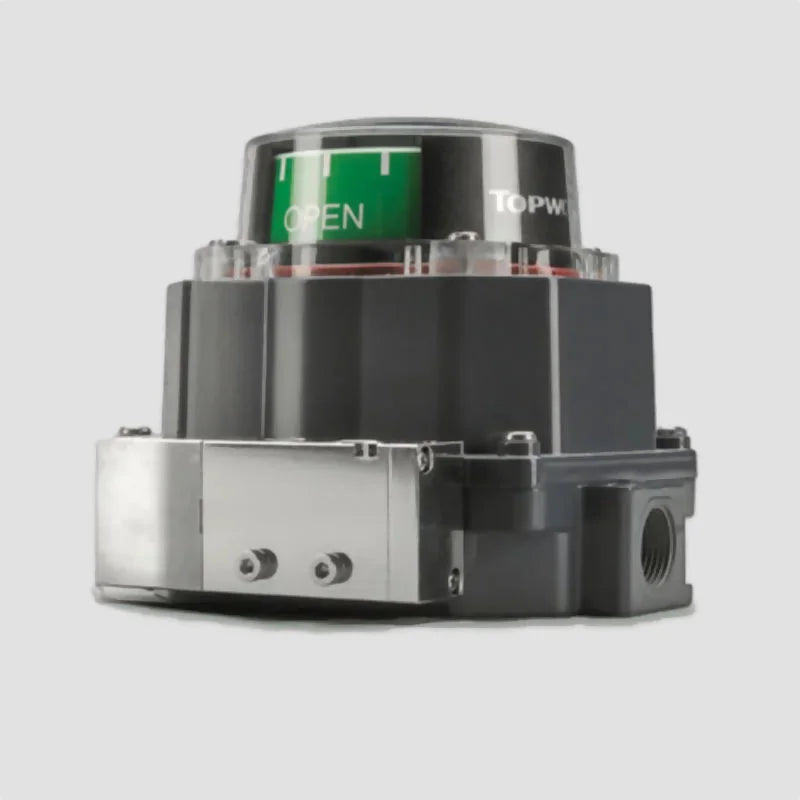Topworx Switchboxes
TopWorx Limit Switch Box TVL-R2GGNPM7A1 Valve Monitor
TopWorx Limit Switch Box TVL-R2GGNPM7A1 Valve Monitor
Couldn't load pickup availability
The TopWorx TVL-R2GGNPM7A1 Limit Switch Box is a high-performance, heavy-duty valve monitor equipped with GO™ Switch proximity sensors, offering unparalleled durability and reliability for valve automation in the most challenging environments. Part of the versatile TVL Series by TopWorx (Emerson), this model combines rugged enclosure protection, clear visual indication, and long-life sensing technology to deliver exceptional performance in applications that demand accuracy and resilience.
Designed with a NAMUR-standard mounting base, IP67-rated enclosure, and 2 GO™ proximity switches, the TVL-R2GGNPM7A1 is ideal for harsh industrial settings, including oil & gas, chemical processing, marine, mining, and utilities. GO™ Switches are renowned for operating in extreme temperatures, vibration, and corrosive atmospheres without losing accuracy.
🔑 Key Features:
2 GO™ Proximity Switches: Non-contact, long-life feedback switches for precise open/closed indication
Visual Position Indicator: Dome-style indicator offers easy on-site valve status visibility
NAMUR Mounting Interface: Standardised mounting fits most pneumatic actuators
IP67 Enclosure: Fully sealed to protect from dust and water ingress
Heavy-Duty GRP Body: Glass-reinforced polyester housing resists corrosion, chemicals, and impacts
Dual 1/2” NPT Conduit Entries: Allows flexible wiring and installation options
Extreme Durability: GO™ switches function in vibration, moisture, and extreme temperatures
Wide Operating Range: Withstands environments from -40°C to +85°C
📊 Product Specifications
| Specification | Details |
|---|---|
| Model | TVL-R2GGNPM7A1 |
| Manufacturer | TopWorx (Emerson) |
| Series | TVL Series |
| Switch Type | 2 × GO™ Proximity Switches |
| Visual Indicator | Dome-Style Open/Closed Indicator |
| Mounting Interface | NAMUR Standard |
| Enclosure Rating | IP67 |
| Material | Glass Reinforced Polyester (GRP) |
| Conduit Entries | 2 × 1/2” NPT |
| Operating Temperature | -40°C to +85°C |
| Certifications | CE, CSA, ATEX (depending on configuration) |
| Ideal Applications | Valve Automation, Hazardous Locations, Harsh Environments, Process Industries |
The TopWorx TVL-R2GGNPM7A1 sets the standard for valve feedback in tough industrial environments, offering rugged dependability and precision sensing where standard mechanical switches may fail. Backed by the proven quality of GO™ Switch technology and TopWorx engineering, this valve monitor is built to last.
📦 Need help with selection or availability? Get in touch with our team today for expert support and fast delivery options!
Share

Enquire Online!
FAQ's
What is the difference between a valve and an actuator?
What types of actuators are available?
The main types of actuators are:
Pneumatic actuators – use compressed air for fast, reliable operation.
Electric actuators – use electrical power for precise control.
Hydraulic actuators – use fluid pressure for high-torque applications.
Each type offers unique advantages depending on the environment, media, and system control needs.
How do I choose the right actuator for my valve?
To select the correct actuator, consider:
Valve type and torque requirement
Power source available (air, electric, or hydraulic)
Operating environment (temperature, humidity, hazardous area)
Control signal type (on/off or modulating)
Matching actuator torque and compatibility with the valve’s ISO mounting ensures reliable performance.
What are the main types of valves used in automation?
The most common valves in automated systems include:
Ball valves – for tight shutoff and quick operation.
Butterfly valves – for larger flow control with compact design.
Globe valves – for precise throttling and flow regulation.
Check valves – to prevent backflow.
Gate valves – for full bore flow isolation.
What’s the difference between a double-acting and spring-return actuator?
Double-acting actuators use air (or power) to both open and close the valve.
Spring-return actuators use air to open (or close) the valve, and a built-in spring to automatically return it to a safe position when power or air is lost — ideal for fail-safe operation.
How often should valves and actuators be serviced?
Regular maintenance intervals depend on operating conditions, but a good rule of thumb is to inspect every 6–12 months.
This includes checking for leaks, lubrication, seal wear, and actuator responsiveness to prevent unexpected downtime.

